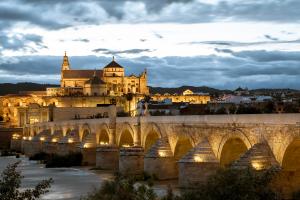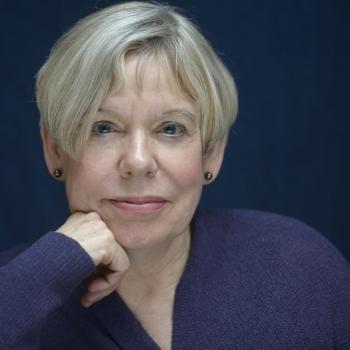 German philosopher Friedrich Nietzsche bemoaned the destruction of Spanish Cordoba, calling it the one truly authentic civilization to have mastered the art of living physiologically and spiritually well. Modern-day historian Chris Lowney corroborates those observations- no lamentations required. The famous Muslim poet, Muhammed Iqbal, May have been the first to expose the similarities between 12th-century Muslim writer Hayy ibn Yaqzan, and Robinson Crusoe, but It was Chris Lowney who draws the most superlative analogy of all, in his book titled, A Vanished World, where he parallels the experiment which was medieval Spain to the experience of the post-modern world.
German philosopher Friedrich Nietzsche bemoaned the destruction of Spanish Cordoba, calling it the one truly authentic civilization to have mastered the art of living physiologically and spiritually well. Modern-day historian Chris Lowney corroborates those observations- no lamentations required. The famous Muslim poet, Muhammed Iqbal, May have been the first to expose the similarities between 12th-century Muslim writer Hayy ibn Yaqzan, and Robinson Crusoe, but It was Chris Lowney who draws the most superlative analogy of all, in his book titled, A Vanished World, where he parallels the experiment which was medieval Spain to the experience of the post-modern world.
By chronicling the lives of the many personalities who contributed to Medieval Spain’s evolution and eventual demise, Mr. Lowney proves, that if survival is a fundamental human motivation, then it is survival of our identity as much as it is survival for its own sake, which determines the course of human history. If history repeats itself, it does so only to restate the lesson that Medieval Spain has taught us: Mainly, that tolerance and diversity breed prosperity.
The Golden age of Spain was an age where merit and reason prevailed and where religion transcended doctrinal beliefs. History is, as Mr. Lowney brilliantly illustrates, the art of selective perception. No one can absorb every aspect of the past. But which aspects we choose to highlight and which we choose to ignore can mean the difference between war and peace. Nowhere is this more apparent than in our introduction to the character of Spain’s chosen patron saint James.
The legend of James begins with two characters in history who are bound only by a common name, but who signify the two personalities which brought and tore Spain apart. One is James, the Muslim killer, who becomes the icon of religiously grounded hatred, and who is known for his brutality. The other is James the pilgrim, known for his kindness and spirituality. These two diametrically opposed images are projected onto one persona. Over time the memory of Saint James assumes the characteristics which best suits the collective psyche and political ambitions of his followers.
 Against the backdrop of this increasingly abstract character, we become acquainted with a host of other historical figures, each either faithful to the image of a pilgrim or a killer. But the individuals most worthy of notice are those who remained faithful to a vision of peace. They were the individuals, whose contributions from math, science, and philosophy remain with us to this day. These were the men of religion and reason. Whenever the two have met, it was because of the courage of individuals like, the Jewish Maimonides, who sought to prove the compatibility of beliefs and human reason in his work, Guide for the perplexed, and Ibn Rushd, also known as Averroes, whose brilliant work, The Harmony of Religion and Philosophy, reconciled the relationship between reason and faith. And the doctor and philosopher Ibn Sina (Avicenna) whose exhaustive treatise on medicine was used for over five centuries.
Against the backdrop of this increasingly abstract character, we become acquainted with a host of other historical figures, each either faithful to the image of a pilgrim or a killer. But the individuals most worthy of notice are those who remained faithful to a vision of peace. They were the individuals, whose contributions from math, science, and philosophy remain with us to this day. These were the men of religion and reason. Whenever the two have met, it was because of the courage of individuals like, the Jewish Maimonides, who sought to prove the compatibility of beliefs and human reason in his work, Guide for the perplexed, and Ibn Rushd, also known as Averroes, whose brilliant work, The Harmony of Religion and Philosophy, reconciled the relationship between reason and faith. And the doctor and philosopher Ibn Sina (Avicenna) whose exhaustive treatise on medicine was used for over five centuries.
Upon the departure of Averroes, another intellectual giant and spiritual prodigy, Ibn Arabi, enters the scene. It is thanks to him that Sufism, which was rooted in the Islamic East, flourished in the Spanish terrain. And upon his death, we witness the birth of Judaism’s greatest mystic, Moses de Leon.
Mysticism served as the channel through which all three monotheistic faiths could appreciate the shared wisdom that transcended the trappings of their respective doctrinal beliefs. However, the mystics did not leave much impression on their irreligious counterparts, who used the name of God to justify their perpetual quest for domination.
 Although each religion made its respective contribution to its sister faith, Mr. Lowney makes a courageous observation that would be pointless to ignore. For the truth remains, that the basic core beliefs of each faith are in fact – not reconcilable. We are either saved or not. We either believe Jesus was the Messiah or we do not. We either acknowledge that Muhammad is a messenger of God, or we do not. And in grappling with this reality, we are forced to appreciate that, while beliefs may diverge, the translation of those beliefs, no matter what they are, remains the same for every faith tradition. In the end, we are left with the overriding and non-negotiable teaching which underlies every religious tradition; That to succeed in a secular world, we must adhere to the most fundamental of all sacred precepts- to love God above all things and to love one’s neighbor as oneself.
Although each religion made its respective contribution to its sister faith, Mr. Lowney makes a courageous observation that would be pointless to ignore. For the truth remains, that the basic core beliefs of each faith are in fact – not reconcilable. We are either saved or not. We either believe Jesus was the Messiah or we do not. We either acknowledge that Muhammad is a messenger of God, or we do not. And in grappling with this reality, we are forced to appreciate that, while beliefs may diverge, the translation of those beliefs, no matter what they are, remains the same for every faith tradition. In the end, we are left with the overriding and non-negotiable teaching which underlies every religious tradition; That to succeed in a secular world, we must adhere to the most fundamental of all sacred precepts- to love God above all things and to love one’s neighbor as oneself.














